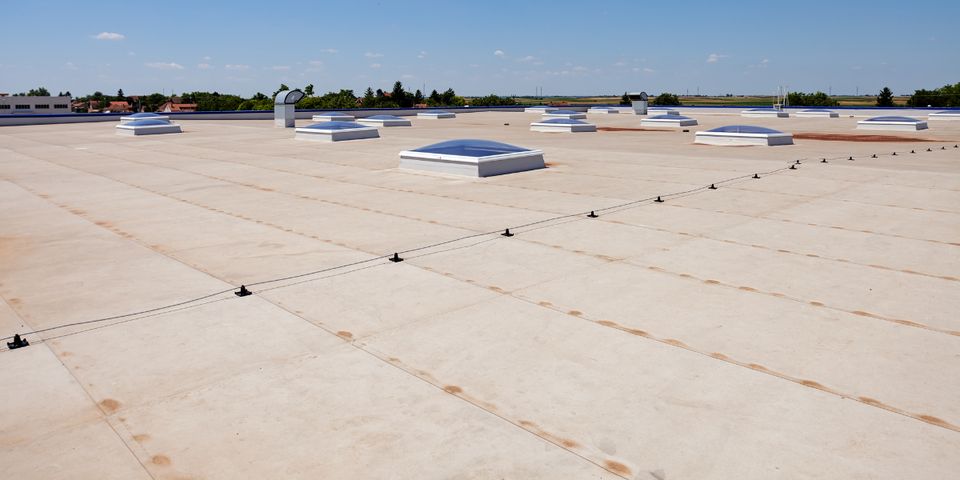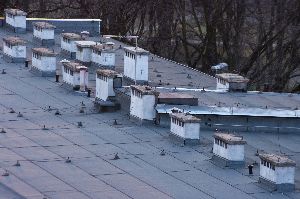A Guide to the Effects of Wind & Hail on Commercial Roofs

Commercial flat roofs typically feature one of three materials: polyvinyl chloride (PVC), ethylene propylene diene monomer (EPDM), or thermoplastic polyolefin (TPO). Whether yours is a PVC, EPDM, or TPO roofing system, understanding how it responds to wind and hail is a key part of keeping the structure safe. Learn more about the effects of both elements in the following guide to increase your maintenance efforts.
What Effect Does Hail & Wind Have on a Flat Commercial Roof?
Wind
EPDM, PVC, and TPO roofing systems are all types of single-ply membranes, so they can sustain damage from strong winds up to 60 miles an hour or higher. The material's edges can lift from excessive wind pressure, especially on a building of great height, because it creates more suction. Single-ply products can also become loose and wrinkled from intense gusts, which makes them susceptible to cracking and developing leaks. Punctures, abrasions, and tears from tree branches, dislodged roof features like vents, and old pieces of HVAC equipment further increase the chances of leaks and water damage.

Protect against wind damage by keeping nearby trees trimmed. Ensure all metal components are secured and clean the roof of debris, as well. Materials that are glued to the wooden frame rather than ballasted on offer the most resistance against wind; however, if your roof is ballasted, add more rocks and pebbles to prevent it from lifting at the edges.
Hail
Thermoplastic commercial roofing systems are designed to withstand hail up to one and three-quarters of an inch in diameter, while rubber materials are more flexible and can handle pellets up to two and a half inches. However, older TPO roofing can have plastic leaking from the membrane, which weakens the material and leaves it vulnerable to hail one-half inch in diameter. These stones can also damage rubber roof membranes if they are overstretched in certain areas, such as around vents and flashing, because the spots are thinner, making them more prone to punctures.
If hail cracks a PVC, EPDM, or TPO roof, water can enter the system and cause rot or mold growth. While you cannot control the weather, you can inspect your structure for storm damage and ensure all drainage systems, including the scupper boxes, are clear of debris. If hailstones accumulate on a flat roof with clogged drains, they can weigh on the system; they will eventually melt, adding stress to the structure because water weighs over 8 pounds per gallon. Routine cleaning avoids unnecessary strain and leaks.
Keep your flat roof in excellent condition with services from South Central Roofing & Sheet Metal in Lebanon, KY. This company specializes in EPDM, PVC, and TPO roofing. Their qualified team provides installations, repairs, and replacements to commercial customers and businesses throughout Marion County. Call (270) 692-6080 to receive an estimate, or visit the website for more information.
About the Business
(1 reviews)
Have a question? Ask the experts!
Send your question

